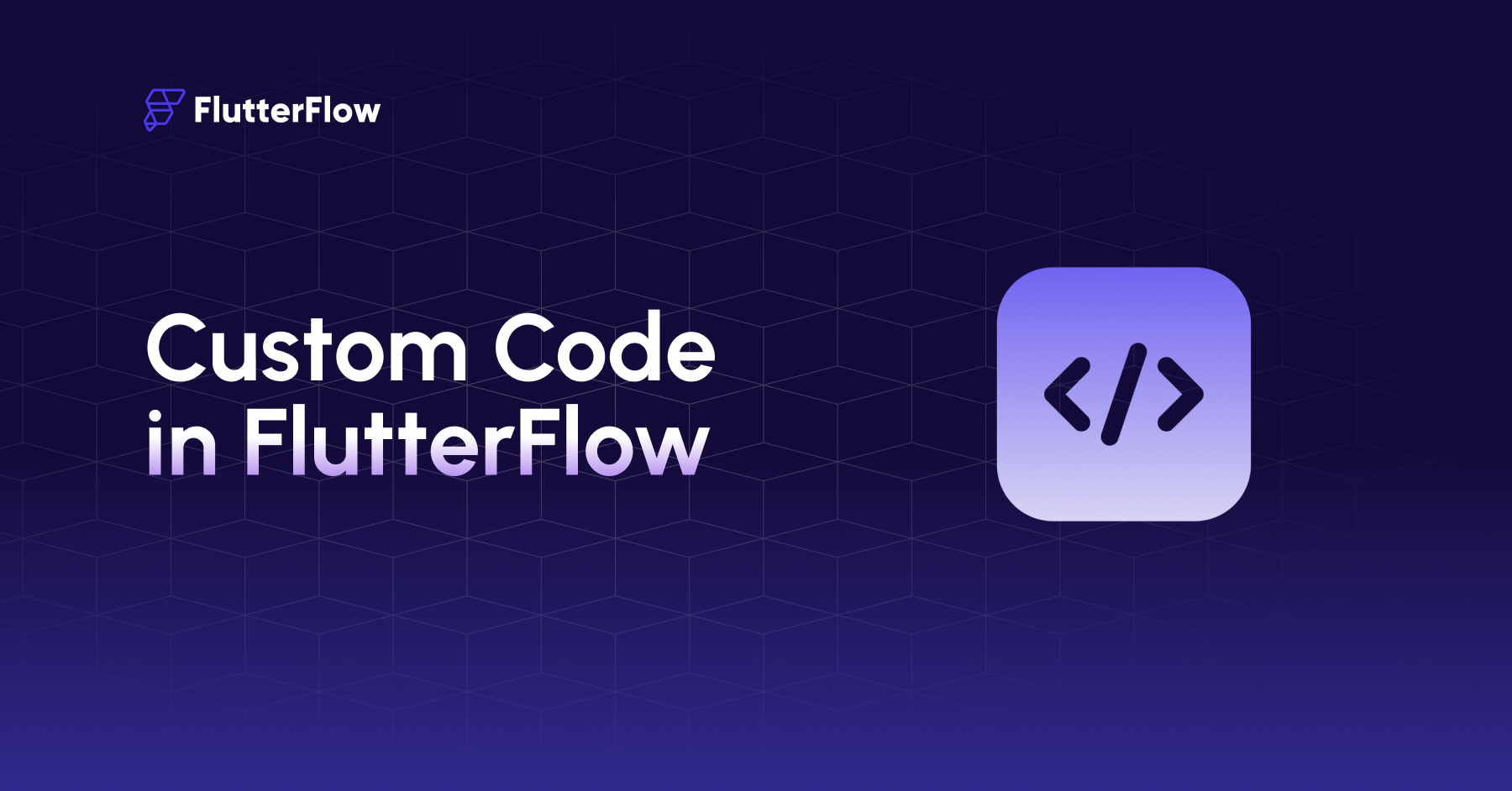FlutterFlow provides a wide range of pre-built components such as buttons, forms, API integrations, and navigation. For many projects, these tools cover most requirements. However, every app eventually needs something that is not available out of the box.
Examples include:
- A third-party API integration with custom requirements
- A unique UI element that is not part of the component library
- Business logic specific to your product or workflow
This is where custom code becomes essential. FlutterFlow allows you to extend your app with Dart code so you get the speed of visual development and the flexibility of custom programming when needed.
Types of Custom Code in FlutterFlow
There are several ways to extend your app with custom code:
- Custom Functions
- Small Dart functions used to set widget or action properties.
- Useful for reusable calculations or logic.
- Example: calculating the total cost of items in a cart.
- Custom Actions
- Async functions triggered by action flows.
- Can import package dependencies.
- Example: triggering a custom analytics event or performing an API call with special formatting.
- Custom Widgets
- Flutter widgets that behave like Components.
- Can import packages and render unique UI elements.
- Example: a star rating bar or a custom chart widget.
- Code Files
- Custom classes, enums, and logic to manage data or behaviors.
- Example: defining a custom data type or utility class.
- Configuration Files
- Native file adjustments for Android and iOS.
- Example: modifying platform-level settings.
How to Write Custom Code
You can add and edit custom code in two main ways.
In-App Code Editor
- Accessible directly inside FlutterFlow.
- Good for quick edits or smaller snippets.
- Includes a Code Analyzer that shows errors as you write.
- Allows you to compile code to check for issues before running the app.
Visual Studio Code Extension
- Recommended for larger or more complex code.
- Opens your custom code in VS Code through the FlutterFlow extension.
- Provides a full IDE experience while remaining linked to your FlutterFlow project.
Making Code More Powerful
Code Copilot
With Code Copilot, you can describe the functionality you need in plain language and FlutterFlow generates Dart code for you. For example, you can type "calculate shipping cost by weight and region" and receive a ready-to-use function.
Input Arguments and Return Values
- Input arguments allow functions, actions, or widgets to adapt to different situations.
- Return values pass data back into the app.
- Example: A custom action that accepts a product list and returns a discounted total.
Callbacks
Custom actions and widgets can call a callback when a certain event occurs.
- Example: A payment widget that calls
onSuccesswhen the transaction completes.
Adding External Packages
You can expand your app by adding packages from pub.dev. FlutterFlow supports public and private dependencies.
Steps to add a package:
- Find a package on pub.dev.
- Check quality indicators like popularity, pub points, documentation, and update history.
- Add the dependency in FlutterFlow under Settings > Project Dependencies > Custom Dependencies.
- Add the import statement to your custom code.
- Use example snippets from the package documentation and adapt them.
Example: Adding the flutter_rating_bar package to create a star rating widget for product reviews.
Managing and Compiling Custom Code
- Compile code frequently to ensure it runs without errors.
- Use the Exclude from Compilation option if one snippet fails but you want to continue compiling the rest.
- Watch for dependency conflicts and update versions as needed.
- Add descriptions to your functions and actions so collaborators understand their purpose.
When to Use Custom Code
Custom code is most valuable when:
- You need UI elements or animations not included in FlutterFlow
- You want to integrate with unsupported APIs or databases
- You need reusable business logic across different flows
- You are building advanced features that go beyond standard components
By combining visual development with targeted custom code, you can build faster while keeping full flexibility.
Bringing It Together
FlutterFlow provides speed and structure with its visual tools and components. With custom code, you are not limited to what comes built in. You can extend apps with unique UI, advanced integrations, or specialized business logic.
This hybrid approach gives developers both efficiency and freedom. It allows you to move quickly while still tailoring your apps to the exact needs of your product or client.

